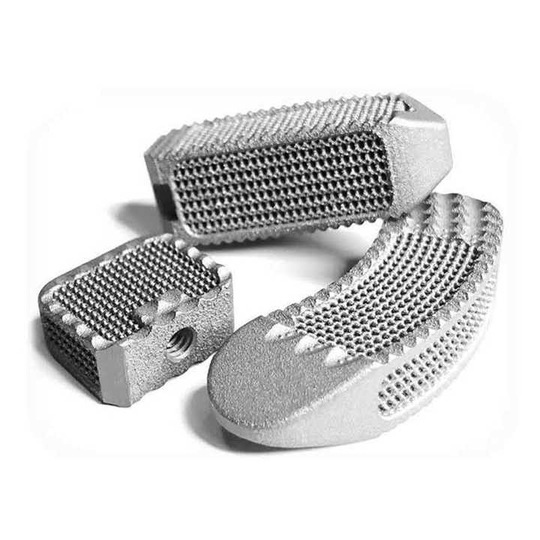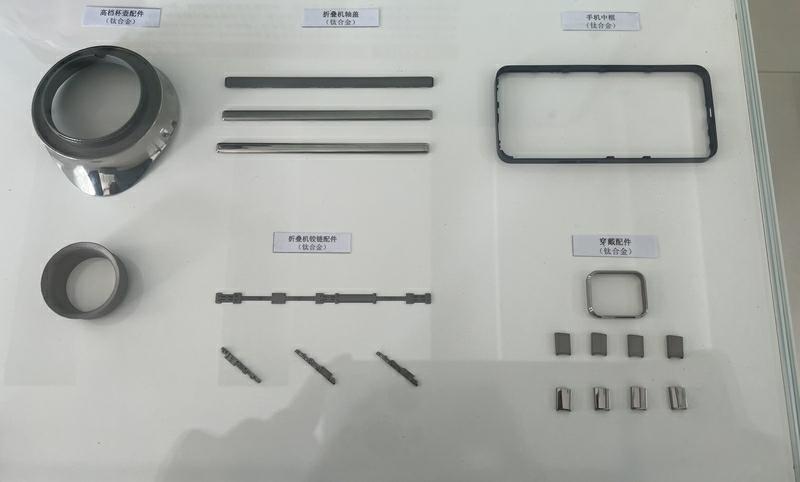Exploring the Frontier of Modern Manufacturing
Imagine a world where the most complex and intricate designs are not just a blueprint but can be brought to life almost instantly. This is not the stuff of science fiction; it’s the reality made possible by 3D printing technology. Particularly for materials as robust and versatile as titanium, 3D printing opens up a universe of possibilities. From aerospace to medical implants, the applications are as expansive as they are impressive. But can this advanced technology truly handle something as challenging as titanium? Let’s dive into the transformative world of titanium 3D printing.
Yes, 3D Printing Can Indeed Create Titanium Parts
Titanium, known for its remarkable strength-to-weight ratio and exceptional corrosion resistance, makes it an ideal candidate for 3D printing. The most commonly used titanium alloy in 3D printing is Titanium 6Al-4V, also referred to as Ti64, comprising approximately 88-90% titanium, 5.5-6.5% aluminum, and 3.5-4.5% vanadium. This alloy not only offers high tensile strength and biocompatibility but also stands up well against corrosion and oxidation.

The applications of titanium 3D printing are vast and varied:
- Aerospace: Utilized for crafting airframe structures and turbine engine components.
- Medical: Perfect for surgical implants and orthopedic devices, owing to its biocompatibility.
- Automotive and Motorsports: Essential for manufacturing high-performance parts like brake calipers and wheel rims.
Among the manufacturing techniques employed, Direct Metal Laser Sintering (DMLS) is prevalent, using a laser to melt titanium powder in a precise, layer-by-layer fashion. Other methods like Electron Beam Melting (EBM) and Selective Laser Melting (SLM) also play crucial roles in producing high-quality titanium parts.
Bridging Technology and Practicality
While the benefits of using 3D printing for titanium parts are clear, including the ability to produce complex geometries and promote material efficiency, there are challenges to consider. The high cost of titanium and the specialized equipment required for 3D printing can be prohibitive. Additionally, achieving the desired surface finish often necessitates further machining or polishing. Despite these hurdles, the future of manufacturing titanium parts via 3D printing looks promising, blending innovation with utility in exciting new ways. As we continue to explore and enhance this technology, the potential for its application seems almost limitless. Stay tuned as we delve deeper into how 3D printing is revolutionizing industries, one layer at a time.

Exploring the Strength of 3D Printed Titanium Parts
The Remarkable Strength of 3D Printed Titanium
3D printed titanium parts are renowned for their exceptional strength, often surpassing that of parts made from other materials and rivaling traditionally manufactured titanium components. The key to this formidable strength lies in the specific titanium alloys used, the precision of the 3D printing process, and the subsequent post-processing treatments that enhance the mechanical properties of the finished parts.
Key Strength Metrics of 3D Printed Titanium
- Tensile Strength: Titanium alloys used in 3D printing, such as the popular Ti6Al4V, exhibit impressive tensile strengths of around 1250 MPa, a significant improvement over standard materials like cast aluminum, which typically ranges from 170-200 MPa. Innovations in alloy development, such as a new titanium alloy from Monash University, have pushed these boundaries even further, achieving tensile strengths exceeding 1600 MPa.
- Yield Strength: Depending on the specific alloy and printing conditions, the yield strength of 3D-printed titanium parts can reach up to 951 MPa, showcasing their robustness and durability.
Case Studies Demonstrating the Strength of 3D Printed Titanium
- Automotive: Bugatti has innovatively used 3D printing to create a titanium brake caliper for the Chiron model. This part not only achieved a 40% weight reduction but also increased strength compared to its traditionally manufactured counterparts.
- Aerospace: NASA’s adoption of 3D printing for rocket engine components has resulted in parts that are stronger and more durable, significantly reducing production lead times and costs.
- Medical: Companies like Amplify Additive utilize Electron Beam Melting (EBM) technology to produce orthopedic implants from high-strength titanium alloys. These implants are designed to promote bone in-growth, resulting in stronger and longer-lasting solutions.

Factors Influencing the Strength of 3D Printed Titanium
- Material Selection: The choice of titanium alloy plays a crucial role, with different alloys providing varied mechanical properties. For instance, the new Monash alloy’s unique microstructure substantially enhances its strength.
- Printing Parameters: Factors such as layer height, infill density, and print speed are critical in determining the final part’s strength. Optimal settings usually involve lower layer heights and higher infill densities, contributing to stronger parts.
- Post-Processing: Techniques like heat treatments can significantly improve the mechanical properties of 3D-printed titanium parts, optimizing their strength and durability.
Comparative Analysis with Traditionally Manufactured Titanium
While traditionally manufactured titanium parts generally exhibit consistent and isotropic properties—meaning their strength is uniform in all directions—the strength of 3D printed titanium parts can vary. This variance is largely due to the anisotropic properties introduced by the layer-by-layer printing process, which can affect strength based on the direction of the applied force. However, with advancements in 3D printing technologies and the development of new alloys, 3D printed titanium parts can now achieve, and sometimes exceed, the strengths of traditionally manufactured counterparts.
- Tensile Strength Comparison: Traditional titanium alloys typically display tensile strengths around 1000 MPa, whereas 3D printed alloys, especially those like the ones used by Monash University, can exceed 1600 MPa.
- Yield Strength Variability: For example, the yield strength of 3D printed Ti6Al4V can reach up to 951 MPa, showcasing the potential of 3D printing to match or surpass traditional methods.
In conclusion, 3D printed titanium parts not only hold their own against traditional manufacturing methods in terms of strength but often offer superior properties due to advanced material selection, optimized printing parameters, and effective post-processing techniques. These characteristics make them highly suitable for demanding applications across automotive, aerospace, and medical industries, where strength and durability are paramount.

